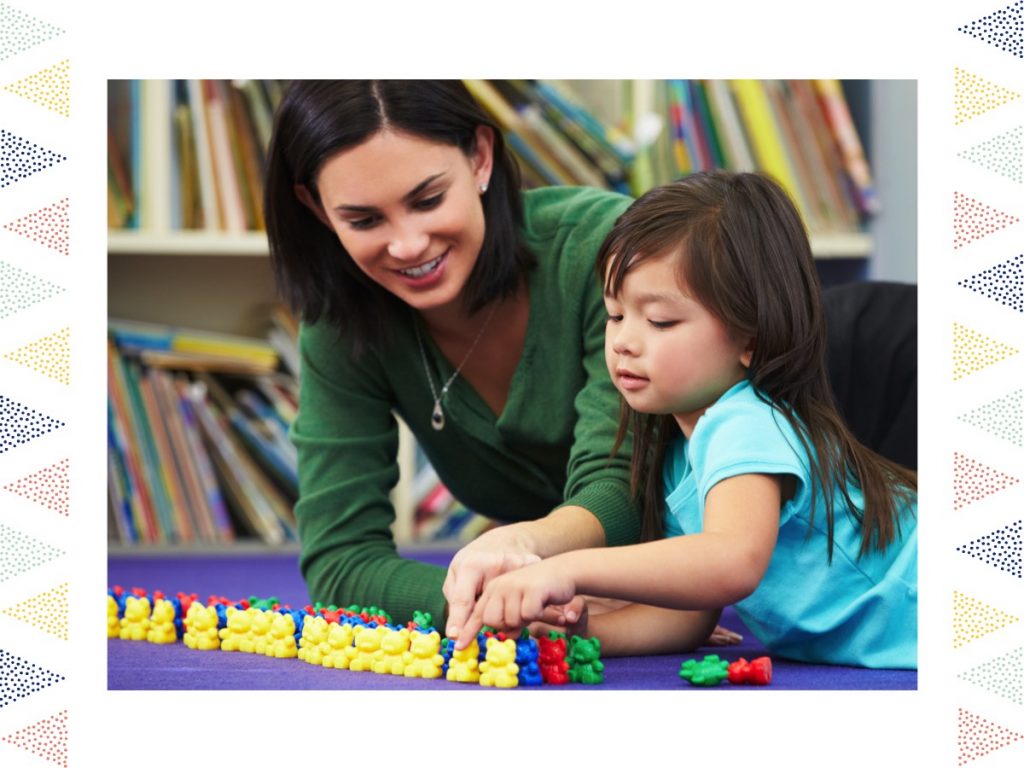
An important skill in counting is to master one-to-one correspondence. One-to-one correspondence refers to matching one object to each number word when counting. The child identifies or points to each object one time while saying the number word. In comparison, rote counting is a less complex skill. This is because children only need to recite numbers in order.
It can take preschoolers months to learn to count using one-to-one correspondence. And they’ll make mistakes along the way! It’s common for children to skip objects or count the same object twice. Give children plenty of opportunities to practice their one-to-one correspondence skills. Ask them to count how many crackers they have, or give one maraca to each of their classmates. You can introduce one-to-one correspondence to younger children during daily routines. Touch each toe and count them aloud as you change their diaper. Or, touch each carrot on their plate as you say, “one, two, three.”
One-to-one correspondence is a key piece of children’s numeracy development. For example, it helps children learn about one purpose of counting: cardinality. Cardinality is the concept that when counting objects, the last number represents the total number of objects in the set. It also helps children think about quantity and number in meaningful ways. This includes using counting to problem solve and using terms like more or less to compare the number of objects.
-
- Cardinality
- is the concept that, when counting objects, the last number represents the total number of objects in the set
- Measurement
- includes size, length, height, weight, volume, distance, and time
- Number and operations
- refers to a set of math concepts related to understanding and representing numbers and operations (e.g., addition, subtraction, multiplication, and division) and the relationships between them
- Numeracy
- is the ability to understand and reason with numbers
- One-to-one correspondence
- refers to matching one object to each number word when counting
- Subitizing
- refers to the ability to identify the number of objects in a small group of objects without counting them
- Scaffolding
- is offering the right level of support to help a child achieve more than they would be able to on their own